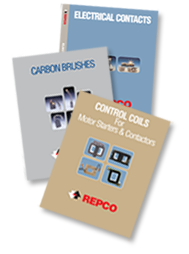The main function of a carbon brush is to conduct current to the revolving motor commutator. In order for the brush to be able to do its job, it needs the help of other associated components in the brush rigging, commutator surface and surrounding environment. Brushes need to have good intimate contact with this moving commutator in order to give adequate life and spark free performance.
If brush performance is not to your satisfaction, there are things you can check:
- Check any outside contributing factors like machine vibration, over or light loaded, contaminated air supply or insufficient motor ventilation.
- Check the condition of the commutator and filming. Compare filming to a check chart.
- Check stator and coil poles. Are they properly connected?
- Check commutating and main coils.
- Check the insulation resistance.
- Check all of the brushes:
- All the same grade, fully seated, not burned, cracked or too short.
- Electrical neutral properly adjusted.
- Free to move within the brush holder, not sticking, no loose shunts or loose terminals.
- Minimal brush vibration.
- Proper and equal spring force.
- Equally spaced circumferentially around the commutator within .050".
- Brush holders properly spaced.
- No frayed shunts or evidence of current being passed thru the spring or brush holder.
- Proper current density for that brush grade.
For proper spring pressure, see the chart below.
|
Class of Application
|
Brush Pressure
|
|---|---|
|
General Industrial
|
2 to 4 lb/in2 (13.8 to 27.6 kPa)
|
|
Mill-type Motors
|
3 to 5 lb./in2 (20.7 to 34.5 kPa)
|
|
Railway Service
|
3.5 to 9 lb/in2 (24.1 to 62.1 kPa)
|
If you have performance-related issues, please contact our brush specialist, Scott Tussey.

